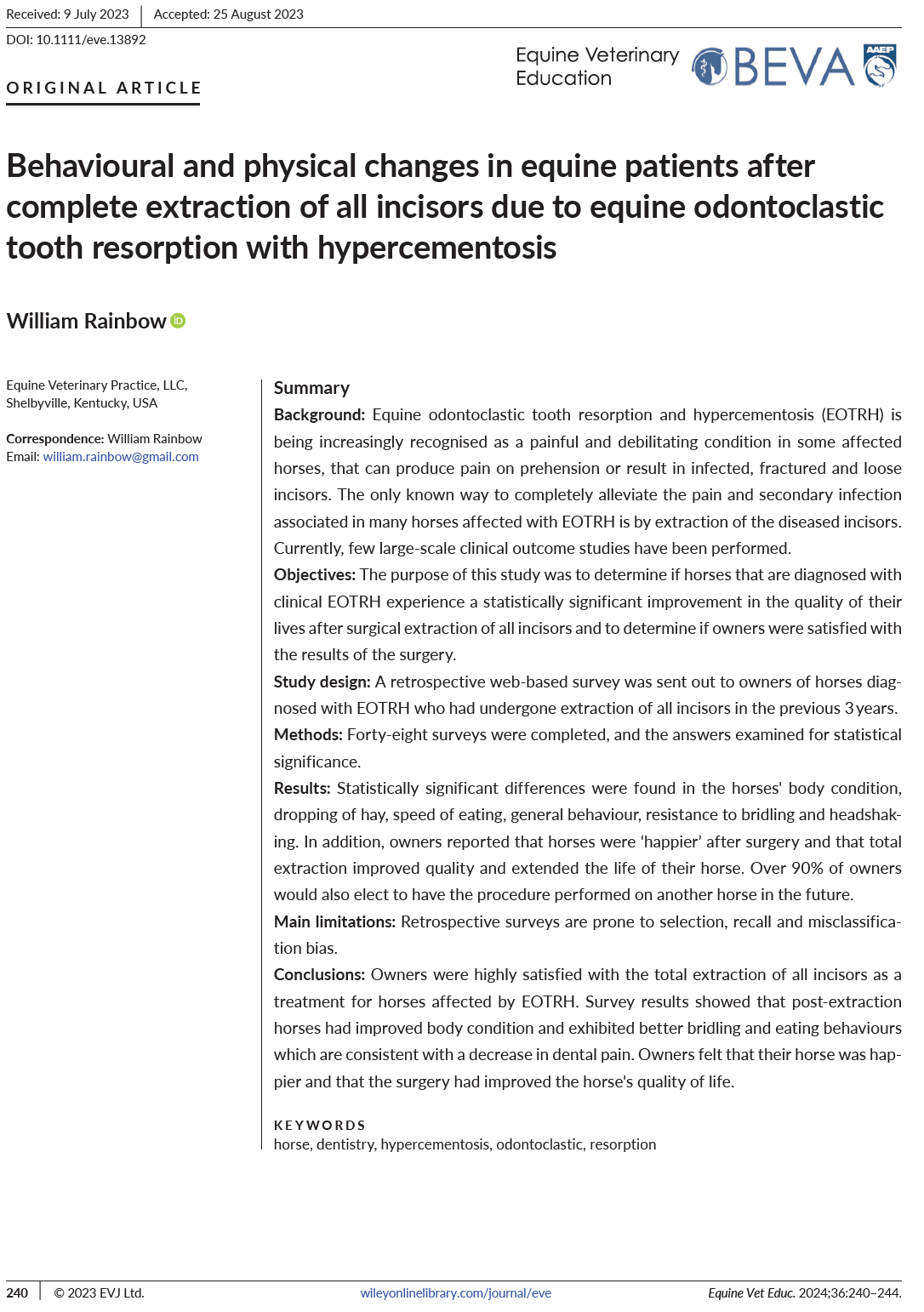EOTRH (Equine Odontoclastic Tooth Resorption and Hypercementosis)
|
|
|
The cause of EOTRH is unknown at this time. There is a theory that some older horses get the disease from abnormal wear, but this has not been proven. One study was performed to see if affected horses have abnormalities in several different hormone levels, but did not find a correlation. The study did find that mostly geldings are affected.
EOTRH is a painful condition. Signs can include difficulty chewing, decreased appetite especially for grazing, rubbing the incisors, pain with pressure on the teeth, irritability when being ridden, weight loss, fractured or missing teeth, and a bulbous, red, or recessed appearance to the gums. However, many horses are very stoic. This disease has a gradual progression, so many horses have learned to live with the pain, adapt to it, and show no outward signs of pain.
EOTRH is a painful condition. Signs can include difficulty chewing, decreased appetite especially for grazing, rubbing the incisors, pain with pressure on the teeth, irritability when being ridden, weight loss, fractured or missing teeth, and a bulbous, red, or recessed appearance to the gums. However, many horses are very stoic. This disease has a gradual progression, so many horses have learned to live with the pain, adapt to it, and show no outward signs of pain.
|
|
EOTRH is diagnosed by taking radiographs. Most of the disease process occurs under the gums, making radiographs necessary. Affected teeth have distinctive abnormalities on radiographs. This includes resorptive lesions, where the tooth is dissolving, and a bulbous appearance, where the body has laid down extra cementum.
|
|
Unfortunately, because the cause of the disease is unknown, there is not a way to stop the disease process in affected teeth. The only proven treatment is extracting the affected teeth. The number of teeth that need to be extracted is entirely related to the stage of disease. As the disease becomes more progressive, all of the incisors may be affected and need to be extracted. Having all of the incisors extracted at once eliminates the entire source of pain, subjects them to only one surgery, and eliminates the cost of multiple procedures. These horses are much more comfortable and happier after the extractions. Most owners report that they didn’t realize how much pain their horse was in until they see the horse’s change in personality after the surgery. These horses go right back to eating after surgery, even after having all of their incisors extracted. They can even go back to grazing, as they learn to use their lips to tear the grass. Riding is also fine once the incision has healed and you will find you have a much happier riding partner!
|
The horse in the video above has no incisors because they were extracted due to EOTRH. He can graze well!
|
|
Horse owners, when first hearing about the prospect of their horse having all of their incisors extracted, are often understandably concerned. A recent study confirmed our observation that horse owners are very happy with the outcome of the procedure. The abstract of this study is included on this page.
|
Would you like to learn more about EOTRH? Dr. McAndrews was a guest on the EquiManagement Disease Du Jour podcast, where she shared the latest on EOTRH to an audience geared towards veterinarians.
